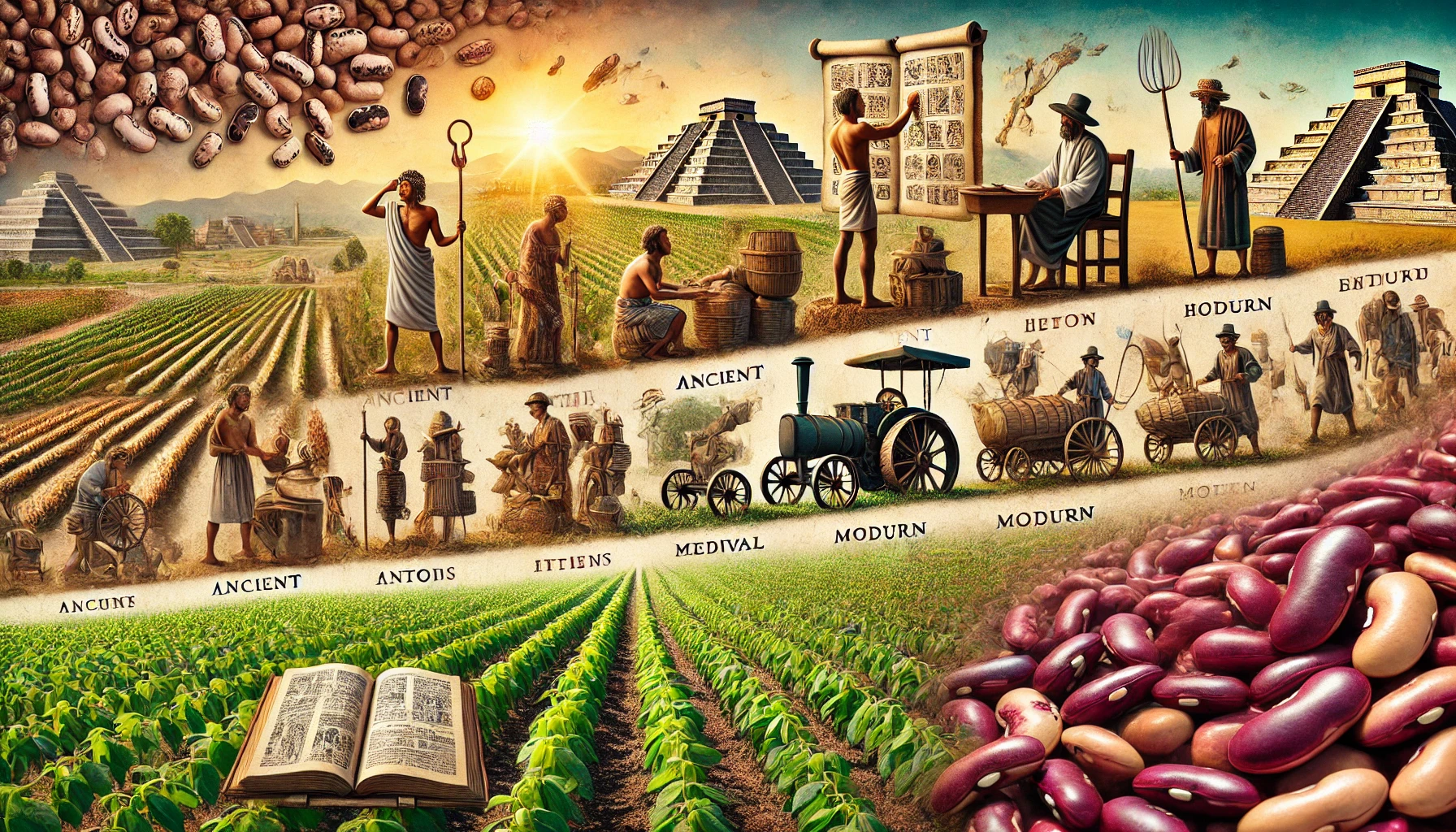Introduction
Long beans, scientifically known as Vigna unguiculata subsp. sesquipedalis, are a fascinating crop with a rich history. Known by various names such as yardlong beans, asparagus beans, and Chinese long beans, they are a staple in many Asian cuisines and have gradually gained popularity worldwide. This article delves into the origins, cultivation, cultural significance, and culinary uses of long beans, tracing their journey from ancient agricultural practices to contemporary kitchens.
Origins and Early Cultivation
Long beans are believed to have originated in Africa, where their wild relatives still grow today. The domestication of long beans is closely linked to the cultivation of cowpeas (Vigna unguiculata), to which they are closely related. The precise timeline of their domestication is not well-documented, but archaeological evidence suggests that cowpeas were cultivated in Africa over 5,000 years ago. It is likely that long beans were selected and bred from these early cowpea varieties.
From Africa, the cultivation of long beans spread to India and Southeast Asia. These regions provided the ideal tropical and subtropical climates for the beans to thrive. The spread of long beans along ancient trade routes facilitated their integration into various agricultural systems and culinary traditions.
Spread to East Asia
Long beans made their way to China, where they became an important vegetable crop. The beans were highly valued for their long pods, which can grow up to 90 centimeters (35 inches) in length. The Chinese name for long beans, 豇豆 (jiāng dòu), reflects their integration into Chinese agriculture and cuisine. Historical records from the Tang Dynasty (618-907 AD) mention the cultivation and consumption of long beans, indicating their significance during this period.
In Japan, long beans are known as “sasage” (ささげ), and their cultivation likely began during the Nara period (710-794 AD). Japanese farmers adopted various cultivation techniques to adapt the beans to local conditions, and long beans became a common vegetable in Japanese diets.
Cultural Significance
In India, long beans, known as “barbati” or “lobia,” are a staple in many regional cuisines. They are often used in vegetarian dishes and are valued for their nutritional benefits, including being a good source of protein, vitamins, and minerals.
Culinary Uses
Throughout history, long beans have held cultural significance in many societies. In China, they are often associated with good luck and prosperity. This association is particularly evident during the Lunar New Year celebrations, where long beans are used in festive dishes to symbolize longevity.
Long beans are incredibly versatile in the kitchen. In Chinese cuisine, they are commonly stir-fried with garlic and fermented black beans, added to soups, or used in pickling. The crisp texture and slightly sweet flavor of long beans make them a popular choice for various dishes.
In Southeast Asia, particularly in Thailand and Indonesia, long beans are a key ingredient in salads like the Thai “som tam” (green papaya salad) and Indonesian “gado-gado” (a vegetable salad with peanut sauce). These dishes highlight the beans’ ability to absorb flavors while maintaining their crunchy texture.
In Indian cuisine, long beans are used in a variety of dishes, from simple stir-fries to complex curries. They are often paired with spices such as cumin, coriander, and turmeric, enhancing their natural flavor and nutritional value.
Modern Cultivation and Global Spread
Today, long beans are cultivated in many parts of the world, including the Americas, where they are grown in both home gardens and commercial farms. The beans have adapted well to different climates, and their relatively low maintenance makes them a popular choice among farmers.
In the United States, long beans are often found in Asian grocery stores and farmers’ markets. Their popularity has grown among home gardeners and chefs who appreciate their unique characteristics and versatility in cooking.
Nutritional Value and Health Benefits
Long beans are not only delicious but also packed with nutrients. They are a good source of dietary fiber, protein, vitamins (especially vitamin A and vitamin C), and minerals such as iron and potassium. These nutritional benefits make long beans a valuable addition to a balanced diet.
The high fiber content aids in digestion, while the vitamins and minerals contribute to overall health and wellness. Additionally, the low-calorie content of long beans makes them suitable for weight management and healthy eating plans.
Conclusion
The history of long beans is a testament to their adaptability and enduring appeal. From their origins in Africa to their spread across Asia and beyond, long beans have become an integral part of many culinary traditions. Their nutritional value, ease of cultivation, and versatile use in the kitchen continue to make them a beloved vegetable worldwide.
As we continue to explore and celebrate diverse food cultures, the long bean stands out as a symbol of agricultural innovation and cultural exchange. Whether enjoyed in a simple stir-fry or a complex curry, long beans remind us of the rich tapestry of human history and the shared joy of good food.



